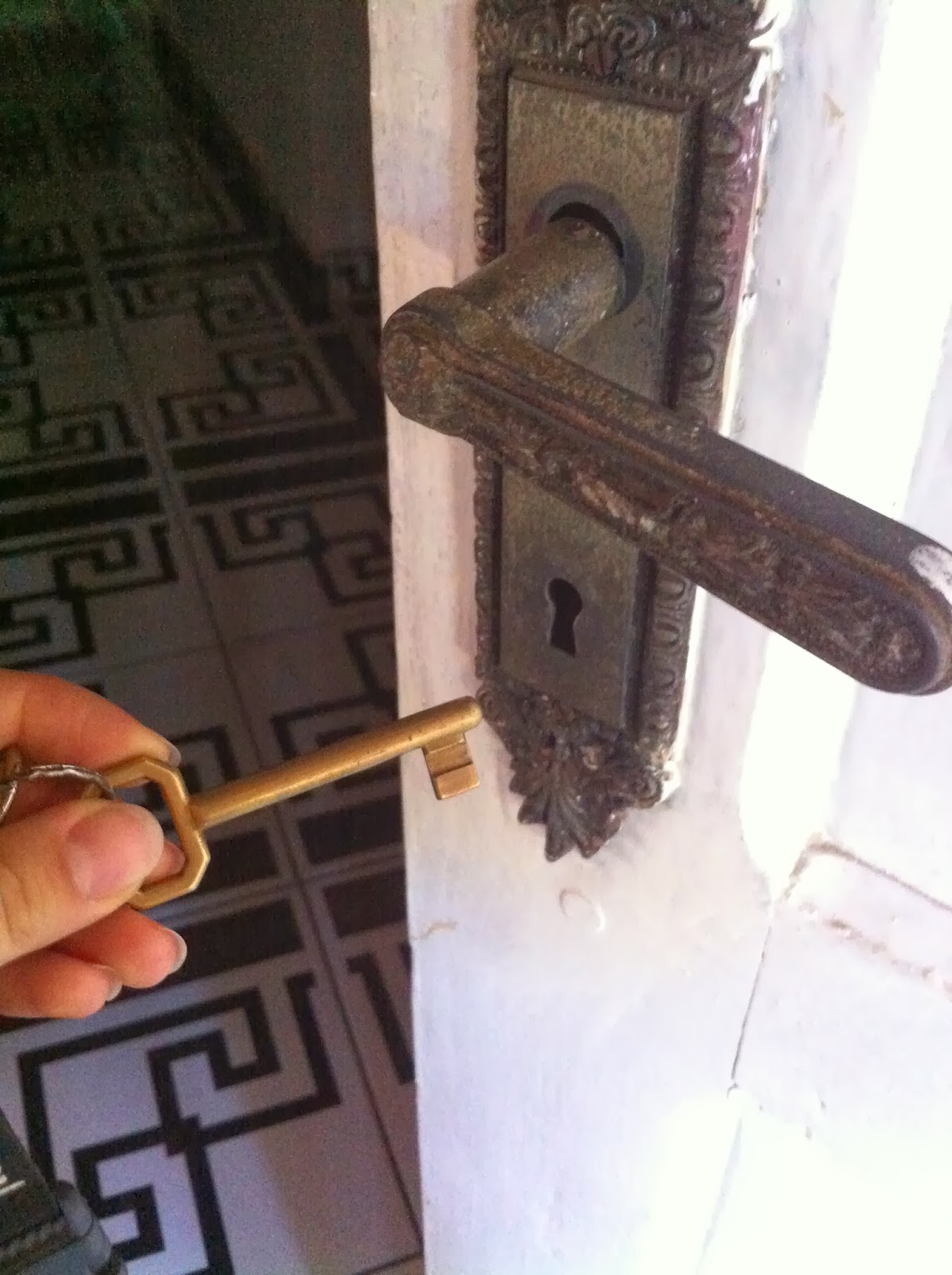We've been learning a lot about the culture of Paraguay and have been enjoying speaking Spanish everyday and learning some words here and there in Guarani.
Here are a few of our mini adventures in becoming Paraguayan:
La prueba más difícil de mi vida
The first day we were here mamá called us downstairs and over to the front door. She told us that she needed to teach us how to use the key to unlock and lock the door. It sounded like a simple task, but it proved to be much more complicated than I first thought. |
The good news is, I can now successfully lock and unlock the door on the first try every time! ;)
Jugo de limón
Our kitchen adventures started by mamá teaching us how to make "jugo de limón" - lemonade!
 |
| Our dinner one night, including our jugo de limón! Caldo de frijoles y sopa paraguaya. |
The Tahitian lemon is very small, seedless, and green on the outside and inside. To use these ones to make juice we use a knife to cut off the entire peel , which is easier said then done, and then throw the whole fruit into a blender. About six of these plus some water and a little sweetener and you've got yourself some delicious juice!
The Paraguayan lemon is bit larger, not quite as big as lemons in the US though, has seeds, and is green on the outside and a yellow-orange color on the inside. These we cut in half and use a juicer with a strainer to make sure the seeds get separated from the juice. From there we add water and sweetener to the juice, and voila, another delicious lemonade!
 |
| Limones Paraguayos |
But whatever you call them, limes or lemons, they are tan rico - so good! :)
Tereré
If you ever plan on coming to Paraguay, you need to know about tereré.
Some of you may be familiar with the concept of yerba mate, a traditional tea drink in South America typically shared among friends. Here in Paraguay they use the Guarani word tereré to refer to the type severed with cold water.
Tereré is composed of loose mate leaves served in a cup (guampa) with a straw (bombilla) with a strainer at the end to keep the leaves from going up the straw. Water is poured from a thermos into the guampa to soak down into the leaves.
The process of drinking tereré goes like this... One person is typically the designated water pourer (the youngest in the group) and is in charge of filling the guampa with water and passing it to whoever wants a drink of tereré. The water pourer will fill the guampa and pass it to the first person, who drinks the tereré until the water is gone and then they'll pass it back to the filler who refills the guampa and passes it to the next person who wants to drink. When you do not want to drink anymore, you say "gracias" when you pass it back to the filler to indicate that you are finished. This process typically continues until the thermos runs out of water or some other unwritten rule that Natalie and I have yet to figure out.
Paraguayans carry their tereré EVERYWHERE with them, which I found funny the last time I visited Paraguay and now that I'm here in the hot summer heat, it makes a whole lot more sense! It is definitely refreshing to drink some cold tereré when it gets this hot! Though it's still kind of funny to me to see people carrying their thermos everywhere they go.
 |
| Practicing being Paraguayan |
Many people were surprised that Natalie and I like tereré and that we drink it so often. Apparently people from the US are usually afraid to drink it and don't like the taste so they don't usually participate or it takes a while for them to get accustomed to drinking it. It didn't take Natalie or I very long! We really enjoy it!
A couple weeks ago Natalie and I went with Andy and Vicente, our host sister and her friend, to the big mercado in Asunción to buy our own termo and guampa set. We went to a store that had a HUGE selection and got them for less than usual. Typically they sell for around 100 mil, but we got ours for only 85 mil! (About $18)
 |
| One side of the termo store |
 |
| View of part of the other side of the termo store |
 |
| Our termos! :) |
Now we are officially Paraguayan! ;)

This comment has been removed by the author.
ReplyDeleteIt's awesome that you learning the culture and enjoying it. I want to try some of that lemonade! :)
ReplyDelete